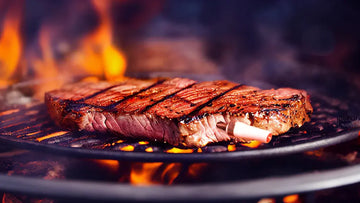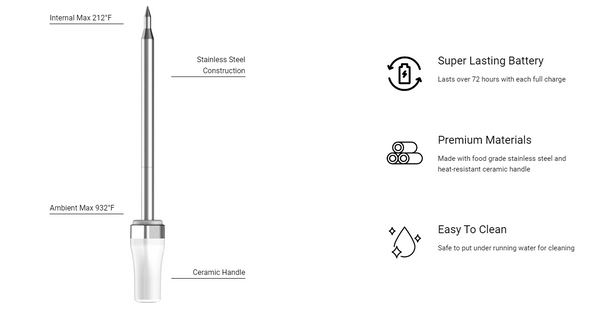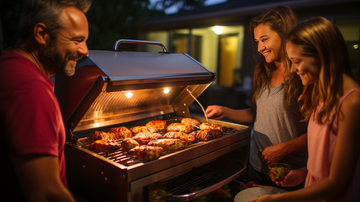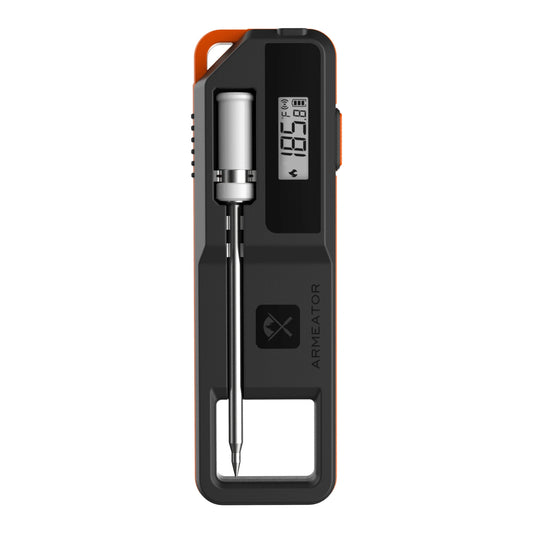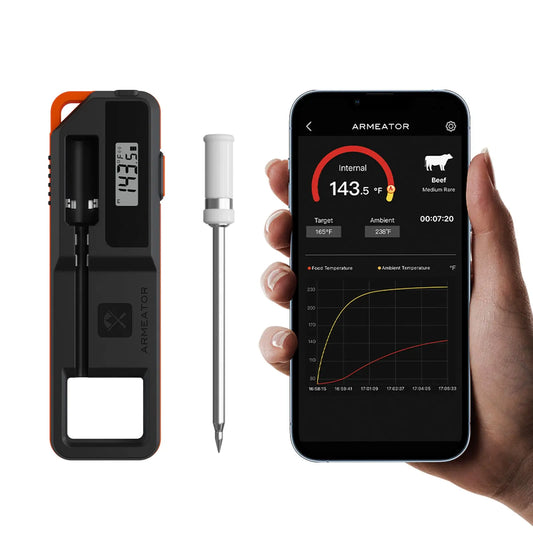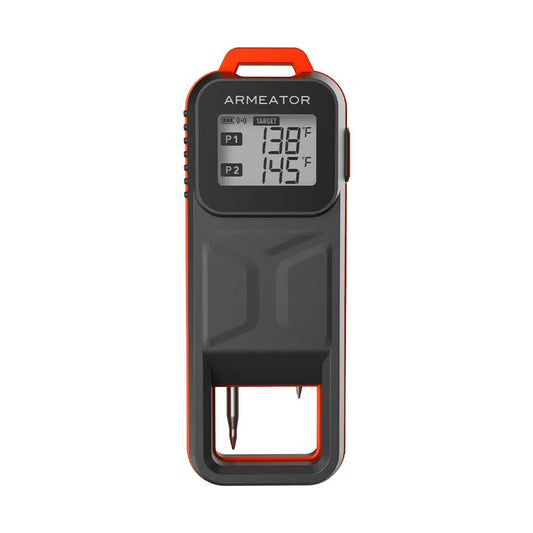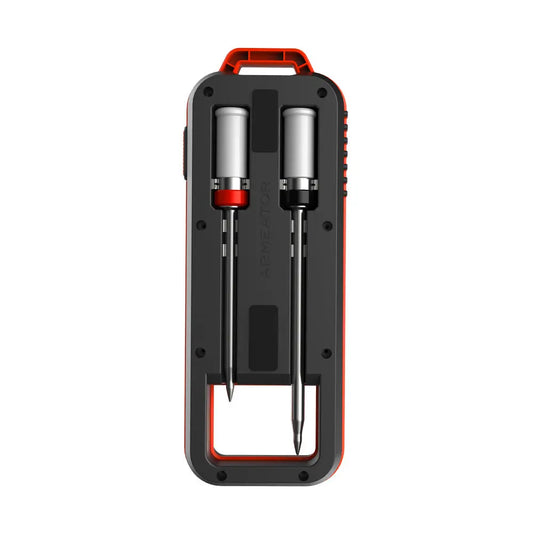With the continuous advancement of technology, wireless meat thermometers have become a popular tool in modern cooking, making grilling smarter and more convenient.
Wireless meat thermometers generally consist of two parts: the probe and the dock, which usually acts as a charger and repeater. The probe is inserted into the meat, and temperature data is transmitted to a mobile application via wireless signals. Users can monitor the food's temperature on their smartphones and receive notifications when the ideal cooking level is reached.
Some individuals express apprehensions regarding the safety of wirelessthermometers. After all, their intended purpose is to remain within the meat and subsequently enter the oven. Let us delve into the safety considerations of this meat thermometers and grasp their practical utilization in cooking.
Materials
Many high-quality wireless meat thermometers use food-grade stainless steel probes, which have the characteristics of high-temperature resistance and corrosion resistance, making them suitable for use in high-temperature environments. This means that the materials of the wireless thermometer won't cause harmful chemical reactions or release toxic substances when used with food.
Additionally, a good wireless thermometer has a handle made of ceramic, protecting the transmitting antenna and providing higher resistance to high temperatures.
Thus, from material safety perspective, wireless meat thermometers are safe.
Usage
Although using such thermometers is straightforward—simply insert the probe into the meat and turn on your phone's Bluetooth to connect with the thermometer, then set the target temperature on the app—each product may have some small differences in usage. For instance, some thermometers can withstand an external environmental temperature of up to 572 ℉, while others can handle up to 932℉. Some brands allow the thermometer to be cleaned in a dishwasher, while others do not.
Therefore, before using any wireless meat thermometer, carefully read the user manual to ensure proper usage, which will extend the product's lifespan and prevent unnecessary worries.
Thus, from the usage aspect, as long as you follow the manufacturer's instructions correctly, the thermometer is safe to use.

Wireless Signals
Although wireless meat thermometers offer many advantages in cooking, there is an essential factor to consider: the stability and reliability of wireless signals. As wireless meat thermometers require data transmission through wireless signals, unstable or interfered signals may lead to inaccurate temperature data. This could affect the level of doneness of the food and even have health implications.
To avoid signal issues, it's essential to choose reliable brands and products when selecting a smart wireless thermometer. ARMEATOR ONE's Bluetooth wireless range extends up to 229ft, allowing you greater freedom to move during cooking or grilling without worrying about signal loss or interruptions. 229ft can meet most household and outdoor cooking needs.
From a cooking perspective, as long as the product you use has a stable signal and transmits accurate temperatures, your thermometer can help you cook meat to a safe and desired level of doneness.

Final Thoughts
The technology of wireless meat thermometers has matured significantly. Ensuring its safety involves carefully researching a brand before making a purchase and avoiding excessively cheap products. Correctly using and maintaining the meat thermometer are also critical factors in ensuring safety. While enjoying the joy of cooking, a wireless meat thermometer will become an indispensable assistant on your grilling journey, helping you create mouthwatering delicacies that will earn you the reputation of a barbecue expert in the eyes of your family and friends!

